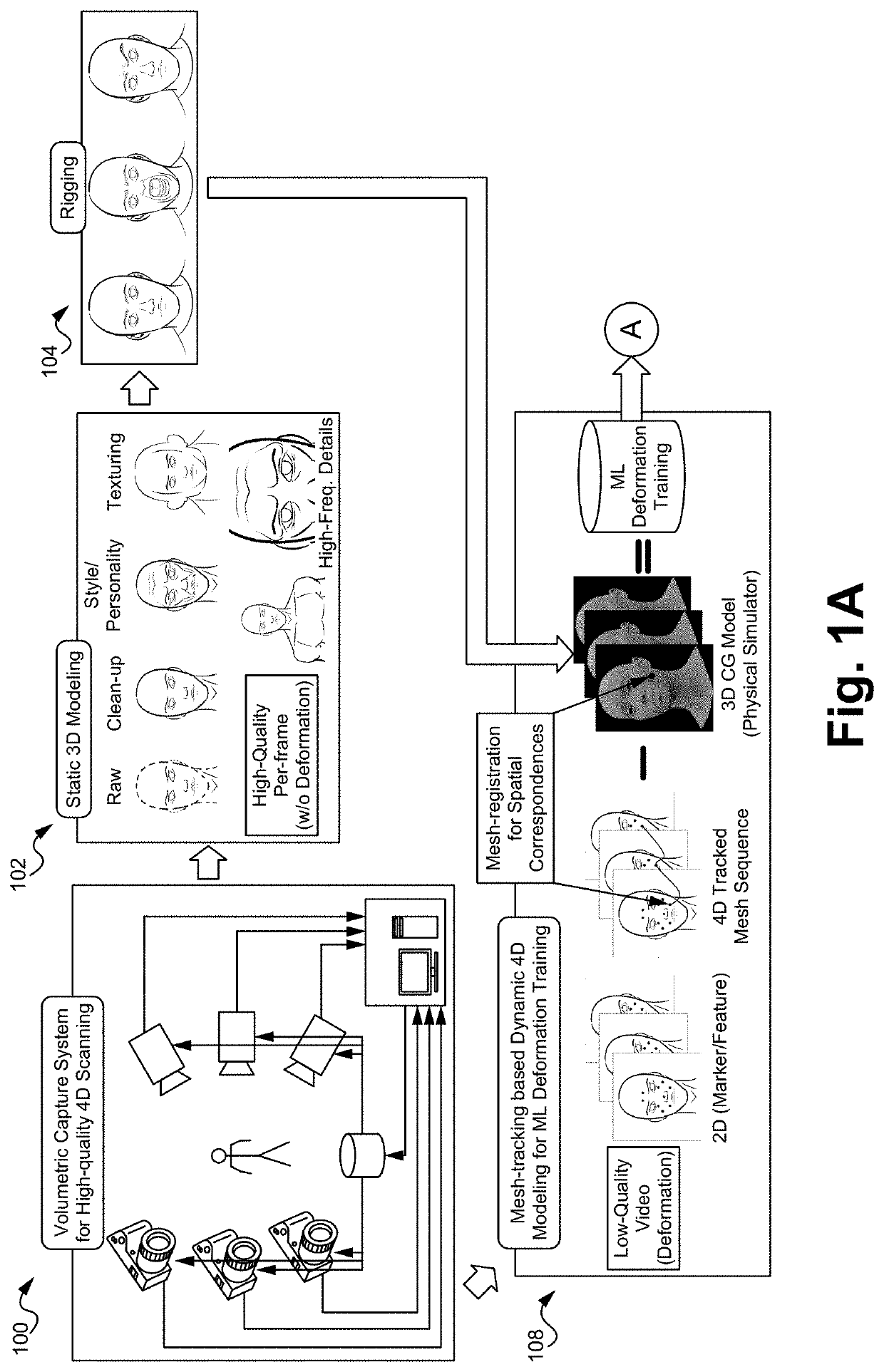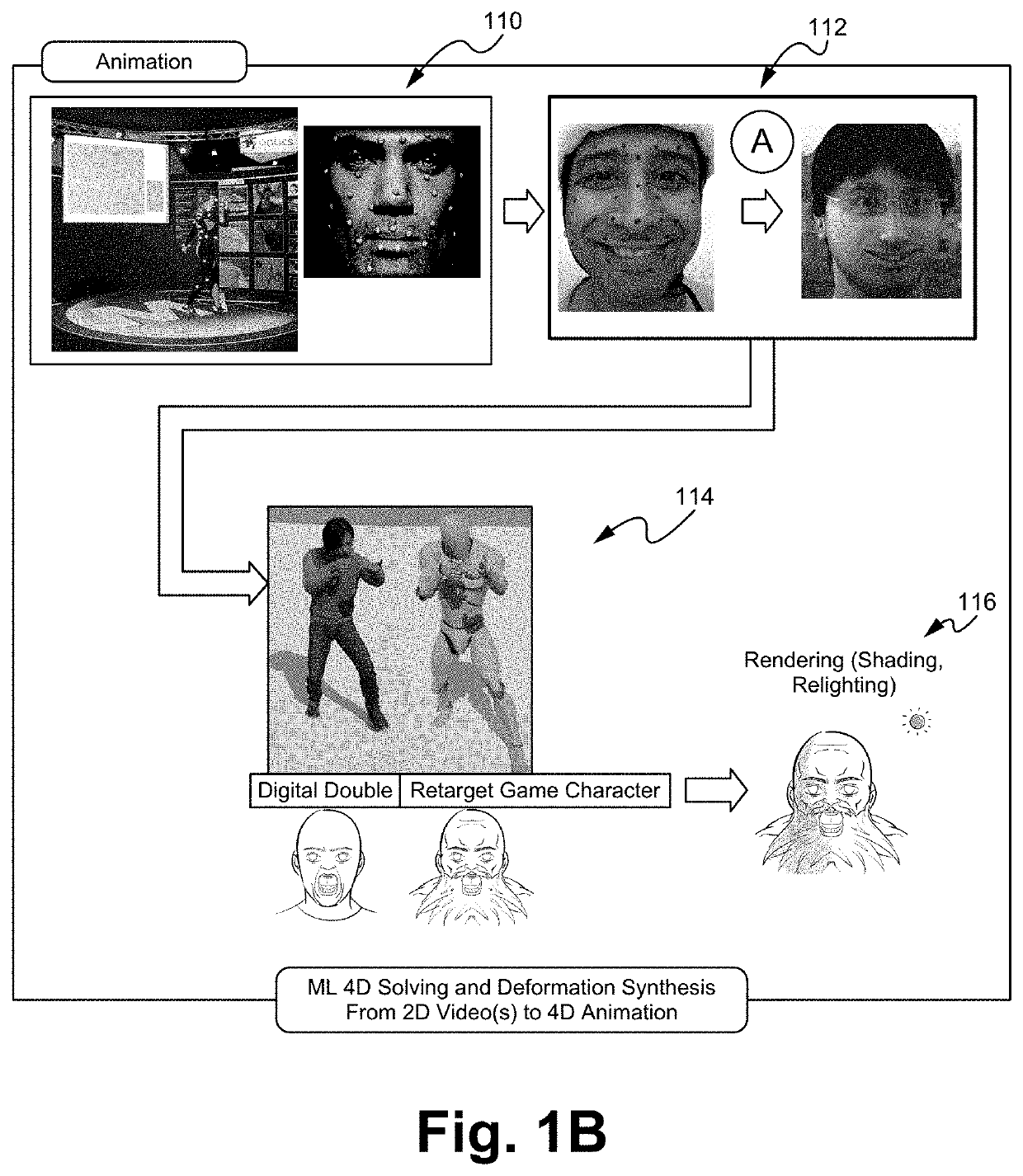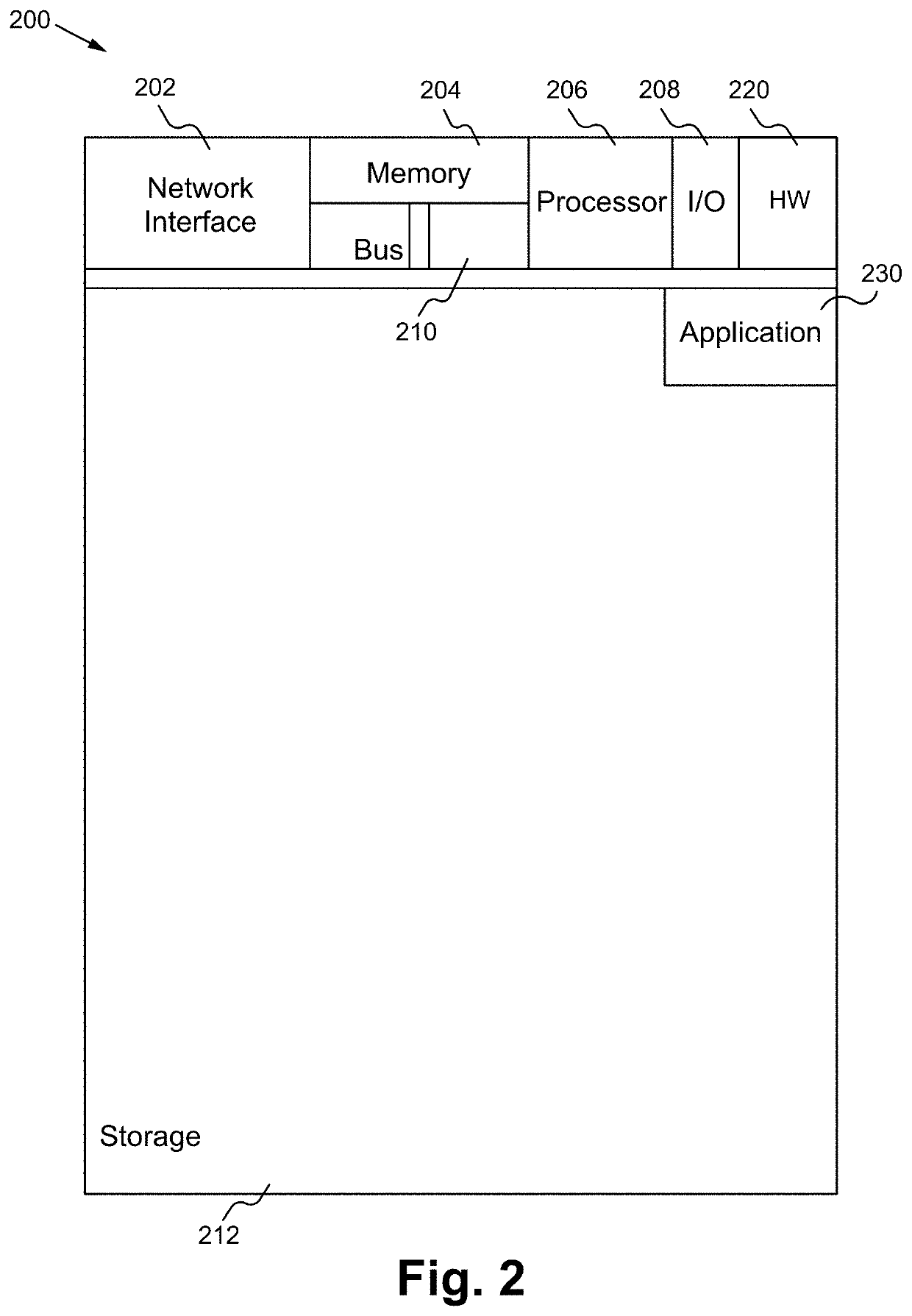Volumetric capture and mesh-tracking based machine learning 4d face/body deformation training
a machine learning and facial deformation technology, applied in the field of three-dimensional computer vision and graphics, can solve the problems of high manual and time-consuming and expensive virtual human creation, inability to create novel face expression or body action, and huge workload for actors, and achieve the effect of high quality, high quality and high quality
- Summary
- Abstract
- Description
- Claims
- Application Information
AI Technical Summary
Benefits of technology
Problems solved by technology
Method used
Image
Examples
Embodiment Construction
[0012]Unlike the prior art 3D scan technology, the deformation training implementation described herein is able to generate dynamic face and full-body modeling with implicit deformations by machine learning (ML), that is the synthesis of arbitrary novel action of face expression or body language with natural deformation.
[0013]The approach described herein is based on photo-video capture from a “photo-video volumetric capture system.” Photo-video based capture is described in PCT Patent Application PCT / US2019 / 068151, filed Dec. 20, 2019 titled, PHOTO-VIDEO BASED SPATIAL-TEMPORAL VOLUMETRIC CAPTURE SYSTEM FOR DYNAMIC 4D HUMAN FACE AND BODY DIGITIZATION, which is hereby incorporated by reference in its entirety for all purposes. As described, the photo-video capture system is able to capture high fidelity texture in sparse time, and between the photo captures, video is captured, and the video is able to be used to establish the correspondence (e.g., transition) between the sparse photo...
PUM
 Login to View More
Login to View More Abstract
Description
Claims
Application Information
 Login to View More
Login to View More - R&D
- Intellectual Property
- Life Sciences
- Materials
- Tech Scout
- Unparalleled Data Quality
- Higher Quality Content
- 60% Fewer Hallucinations
Browse by: Latest US Patents, China's latest patents, Technical Efficacy Thesaurus, Application Domain, Technology Topic, Popular Technical Reports.
© 2025 PatSnap. All rights reserved.Legal|Privacy policy|Modern Slavery Act Transparency Statement|Sitemap|About US| Contact US: help@patsnap.com



